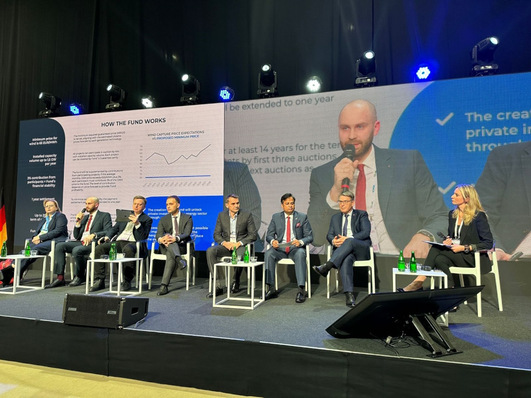The attractiveness of solar photovoltaic (PV) investments has become evident as the health emergency highlights the need to accelerate the transition to a low-carbon economy and cement long-term commitments to decarbonization. At the same time, governments can seize on the fact that investments in renewables generate more employment than in the fossil-fuel sector, a key element in counteracting the high levels of unemployment created by the COVID-19 pandemic. One study suggests that that every $1 million invested in clean energy infrastructure generates 7.49 full-time jobs in renewables, 7.72 in energy efficiency and only 2.65 in fossil fuels.
PV most plentiful and lowest-cost source of energy
The Global Solar Council convened a webinar to get input from global experts on PV’s role in the “green deals” that need to be put in place post-COVID19 and hear experiences from the U.S. market and Spain to understand how solar is positioned to play a role in post-pandemic recovery packages.
Prof. Jeffrey Sachs, Director of the Center for Sustainable Development, Columbia University, Director of the UN Sustainable Development Solutions Network and UN SDG Advocate, commented: “The future is solar – this is without question. By 2050 we will be in a decarbonized world economy, and solar is the most plentiful and lowest-cost source of energy. COVID-19 accelerates the change, even though it brings short-term complications, and makes two things absolutely clear: firstly, we can’t ignore reality as we ignored reality of pandemics, so we can’t ignore the reality of climate change; secondly, we are going to face high unemployment and solar will create a lot of jobs, a lot more than the fossil-fuel economy.”
Solar for a green recovery
Gianni Chianetta, Chairman of the Global Solar Council, stated: “Solar PV is the perfect candidate to lead a green recovery post-COVID-19, generating much needed investments and new jobs while ensuring a climate-friendly future for all at a lower cost than other energy sources. In this context, we can stop talking about an energy ‘transition’ and develop an ‘exit strategy’ from a fossil-fuel economy that perversely we are still subsidizing. It’s time to apply carbon price systems at global level on goods and services to allow all energy sources to compete in a leveled field. Besides, its revenue could be a key financial source for green recovery plans and green deals to be applied worldwide.”
Helen Mountford, steering committee co-chair of the Carbon Pricing Leadership Coalition and Vice President for Climate and Economics at the World Resources Institute (WRI), highlighted the benefits of carbon pricing and fossil fuel subsidy reform in terms of raising revenues for economic recovery and stimulating investments in clean energy. She said: “Carbon pricing has been expanding quite significantly recently -- we now have 79 country-level or sub-national initiatives in place or about to start in the next year or two. Last year we saw carbon pricing put in place in South Africa, in Argentina, in Singapore. This now covers about 22% of global greenhouse gas emissions and raised $45 billion in revenues in 2019. As we look to build back better from the COVID-19 pandemic this is one of the instruments governments should be looking at in terms of raising revenues and setting the right incentives in place to shift more rapidly to a more inclusive, resilient and low-carbon economy and away from the old, polluting, inefficient fossil fuel-based economy.”
Despite the headwinds being faced by solar businesses in many parts of the world right now, the positive outlook was borne out by the current situation in the United States and Spain.
Gregory Wetstone, President and CEO of the American Council on Renewable Energy (ACORE), said: “The American renewable sector has been hard hit by the pandemic, but its fundamental health remains strong. With the right policy support, the U.S. renewable industry can serve as a critical driver for economic growth and an effective solution to the climate crisis over the long term.”
Save consumers money with solar
While BloombergNEF analysts have cut their 2020 forecasts for solar installations in the U.S. by 21% compared to their pre-pandemic estimates, Mr. Wetstone pointed out that solar energy has developed technologically to be economically competitive with other energy sources, which has led to a rapid uptake by U.S.-based corporations and by many U.S. states. “There isn’t an economic bar or a technological bar anymore. With solar, we can save consumers money and we can give them cleaner air,” he added.
Spain stands out in the global PV scenario as a country where solar energy is expanding rapidly even in the absence of incentives. In 2019, 4,201 megawatts of new utility-scale PV capacity was installed in Spain – including 458 megawatts of self-consumption plants with no support from incentives – in effect doubling the country’s installed capacity of solar PV and putting the country on track to exceed the government’s 40-gigawatt target for new utility-scale capacity by 2030.
Necessary measures to minimize the negative impact of COVID-19
José Donoso, Director General of Unión Española Fotovoltaica (UNEF) and Chair-elect of the Global Solar Council, commented: “The Spanish PV industry is ideally placed to play a key role in the economic recovery of our country and in meeting the objectives defined by the NECP, but urgent measures need to be put in place to minimize the negative impact of the COVID19 pandemic. For utility-scale projects, new auctions based on a fixed price need to be carried out as soon as possible, a measure that must be paired with the streamlining of administrative processes. As for self-consumption, action is more urgent and the reactivation plan should include a temporary tax incentive plan, the reduction of the fixed component of the electricity tariff and the acceleration of administrative procedures. Despite the COVID19 crisis, we are confident that Spain will continue to be a leading market for PV in Europe.”
Mr. Donoso echoed other speakers in calling on governments and institutions to provide long-term market stability by committing to clear decarbonization milestones and ending the “peaks and valleys” that the solar industry has had to contend with in the past.
All speakers in the Global Solar Council webinar agreed on the need to end fossil fuel subsidies to accelerate decarbonization strategies. Government support for the production and consumption of fossil fuels totaled $478 billion in 2019, an analysis of 77 economies by the OECD and IEA found. (hcn)







